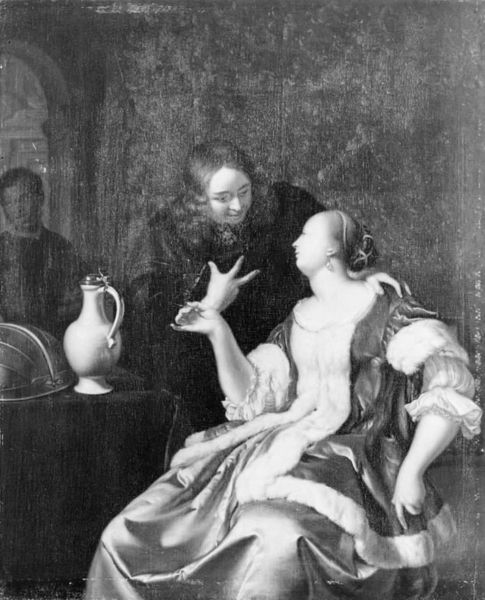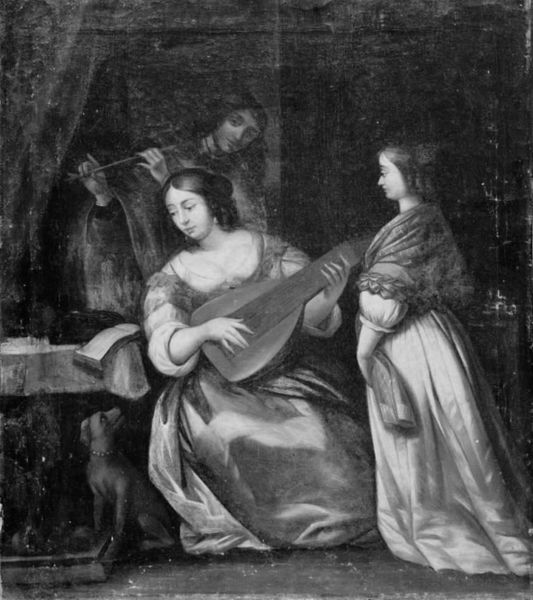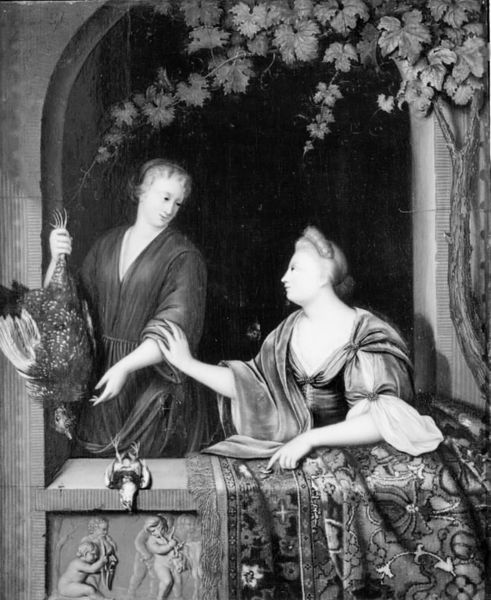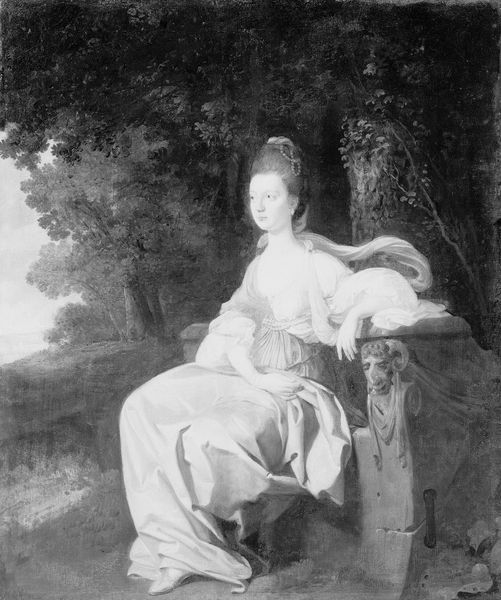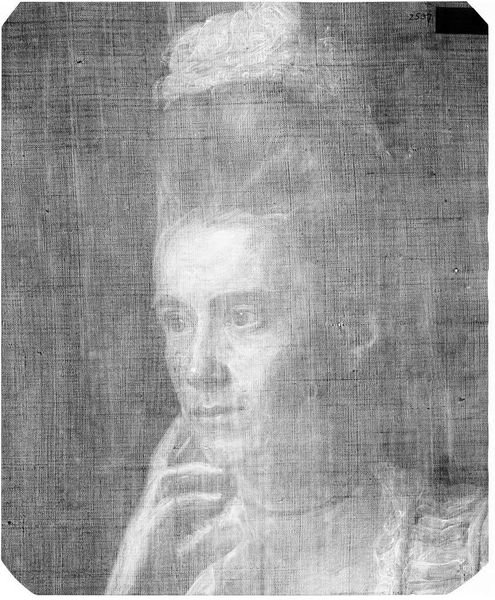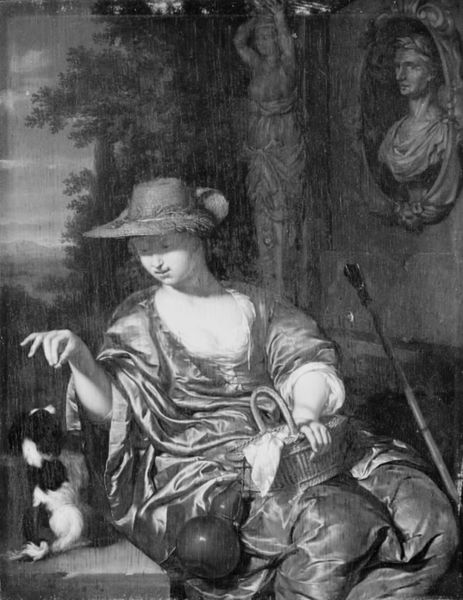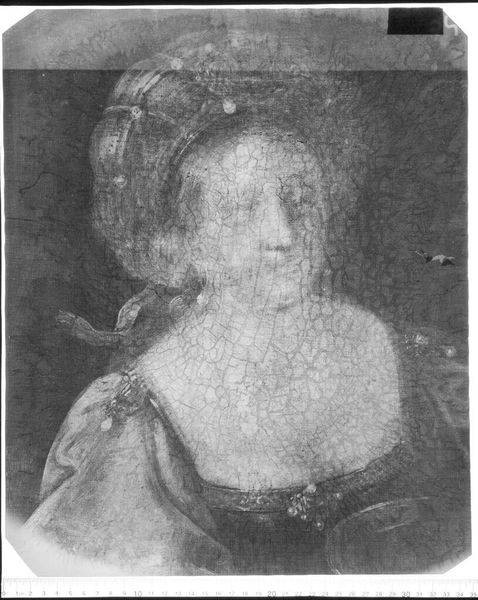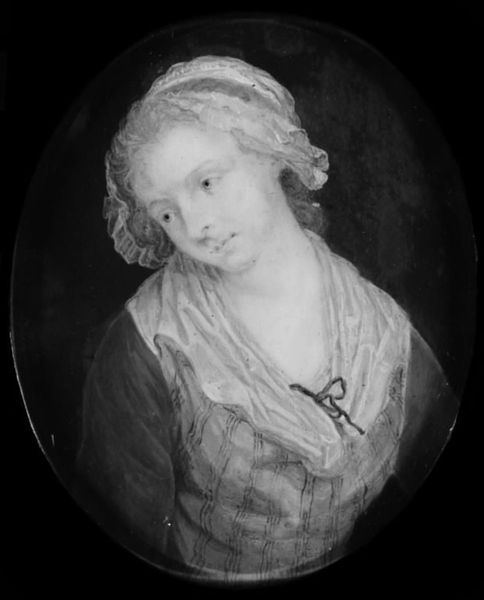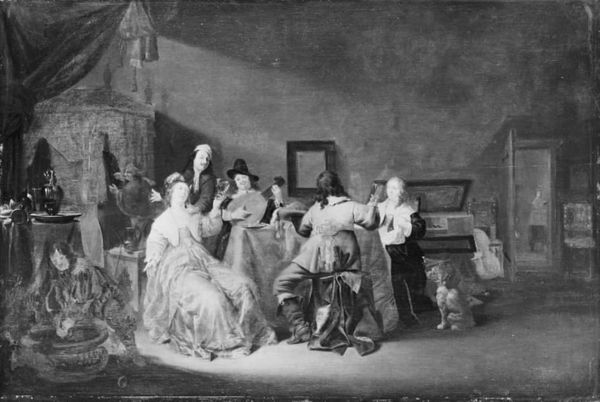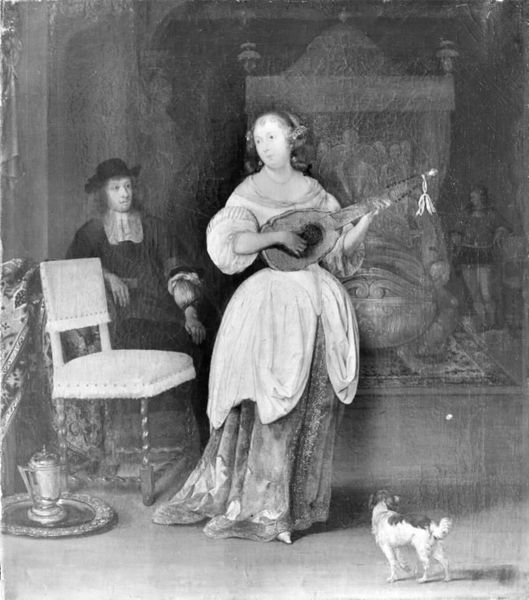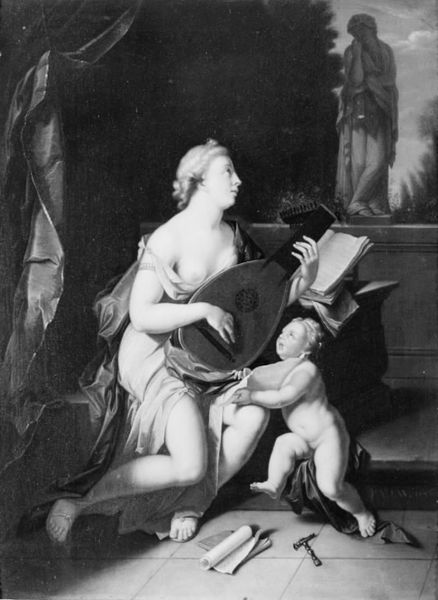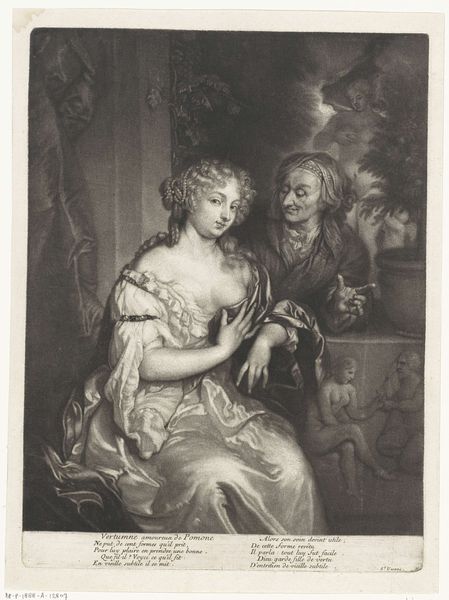
painting
#
portrait
#
baroque
#
portrait
#
painting
#
figuration
#
genre-painting
Dimensions: 124 cm (height) x 95 cm (width) (Netto)
Curator: Here at the SMK, we’re standing before “A Lady Looking at Herself in a Mirror,” likely completed sometime between 1643 and 1674 by the Dutch artist Thomas Mathisen. Editor: My initial impression is of introspection tinged with unease. The composition is stark; the subdued palette adds a sense of gravity. It's a somber scene, quite intimate. Curator: It certainly evokes complex emotional terrain. The presence of an older figure holding the mirror offers us a layered commentary on societal expectations placed upon women of the era and beauty standards. Do we see genuine self-assessment or compliance with these standards? Editor: Visually, it is very simple but there are many layers that invite us into a reflection of self and light. The artist guides our eyes to meet hers in the reflection, drawing our gaze up the linear construction and allowing us to create a conceptual connection between what's visible and what lies beneath, between seeing and perception. Curator: Right. Mathisen invites the viewer to question whether the ‘lady’ has a position of power and control over the older character who assists in viewing her appearance, or has succumbed to the very pressures they seek to represent within this piece. The question of the gaze takes on particular resonance in the work when analyzed within social and historical dynamics of female representation. Editor: And perhaps beyond that initial gaze, Mathiesen subtly disrupts clear interpretations. We should consider how semiotics play a role here, even within what might seem like such conventional portraiture—challenging, rather than solidifying assumptions and biases about the female portrait as a genre and beyond. Curator: Precisely. What do the mirroring acts mean to those involved in this portrayal and others who perceive her at court and/or at other gatherings? How are we invited into it by Thomas Mathisen? There's a push-and-pull between reality, its reflection, perception and expectation— and the way social values influence a person's, or in this case, a woman's self-conception and image in public sphere. Editor: Absolutely, an encounter such as this gives cause to consider beauty not only as form but in its broader essence as discourse that opens into questions and more questions that make an occasion such as this a complex site of contemplation rather than merely something visually pleasing to observe. Curator: I completely agree; Mathisen encourages the viewer to look beyond mere likeness and contemplate the intersection of identity and societal pressure. Editor: Indeed, a rewarding moment for considered visual exploration, rather than simple appreciation.
Comments
No comments
Be the first to comment and join the conversation on the ultimate creative platform.
